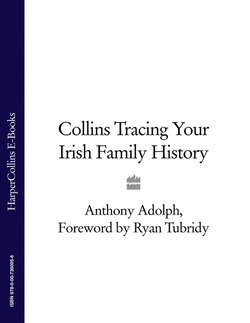Читать книгу Collins Tracing Your Irish Family History - Ryan Tubridy, Anthony Adolph - Страница 25
Censuses
ОглавлениеThe quality and quantity of censuses vary greatly from country to country. Generally, they list the occupants of a country on a specific day. Compiled by place, listing each household in turn, they give varying degrees of information about each person: at best they state names, ages, interrelationships, occupations and places of birth (and, in the United States, for example, the countries of origin of each person’s parents). They are best used in tandem with civil registration. Censuses indicate ages and places to seek birth certificates. These in turn supply the names of parents, who can be sought in earlier censuses.
Census returns for migrant ancestors may confirm ‘Ireland’ as their birth place, and they may give a county or even an exact place. You will often find other Irish people living nearby, with whom your ancestor may have migrated, who could well be close relations. You could actually find several generations born and bred in Ireland living in the same place.
Many countries’ censuses, including Ireland’s, are now partially online and can be found through www.censusfinder.com.
Problems are often lessened simply by being aware of them. Sometimes, places of origin were not given accurately. Famine migrants were so scared of repatriation that they would tell census enumerators that they were born ‘here!’. Equally, when they admitted to being Irish, the enumerators often simply wrote ‘Ireland’, never imagining that we’d want to know more detail. In both cases, seek your ancestor in all available censuses, for some will list more accurate or detailed answers than others.
Migrants sometimes assumed nobody would have heard of their tiny townland of origin, so gave their birthplace as the nearest market town instead. When they did give a precise birthplace, such as a farm, you may have quite a time locating it, especially if its name appears on modern maps under a different spelling, or a translation into or out of Gaelic. You may need to try your own translation and see if that appears on maps instead.
Much Irish migration was a two-stage process – to Argentina via England, New Zealand via Australia, or the United States via Canada. Always bear this in mind and work back patiently, finding out the most common migratory patterns for the period and country concerned.
